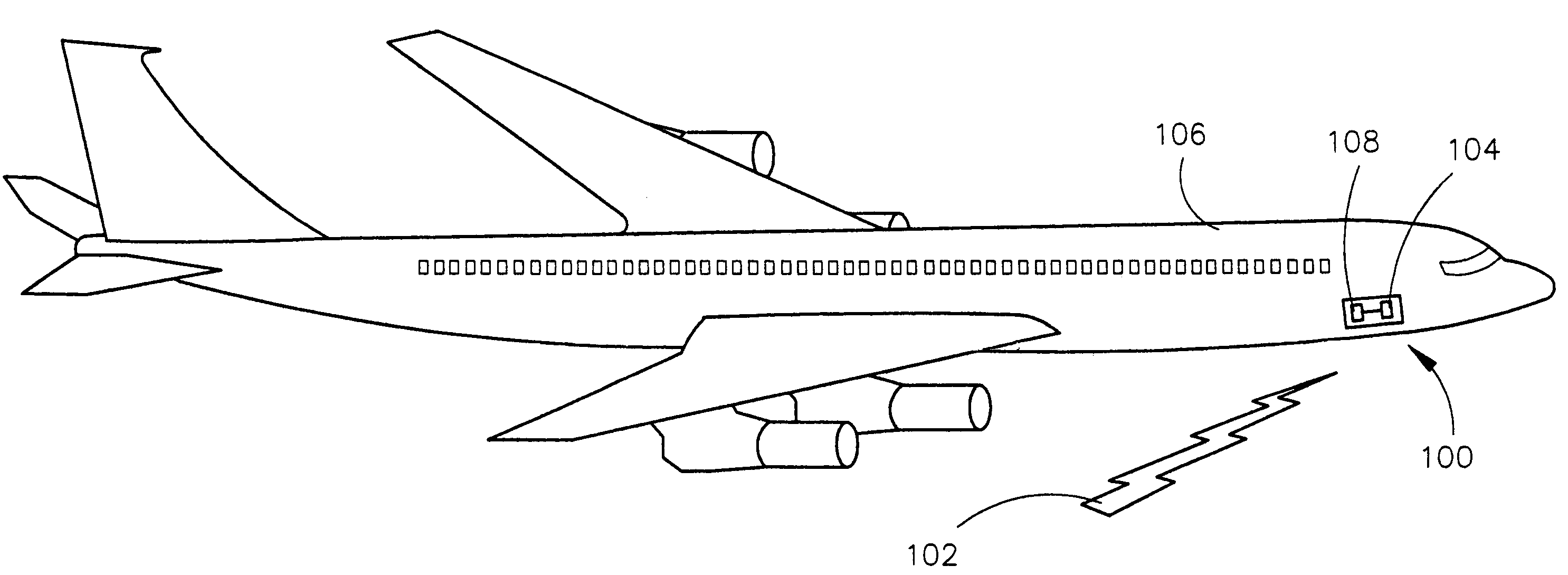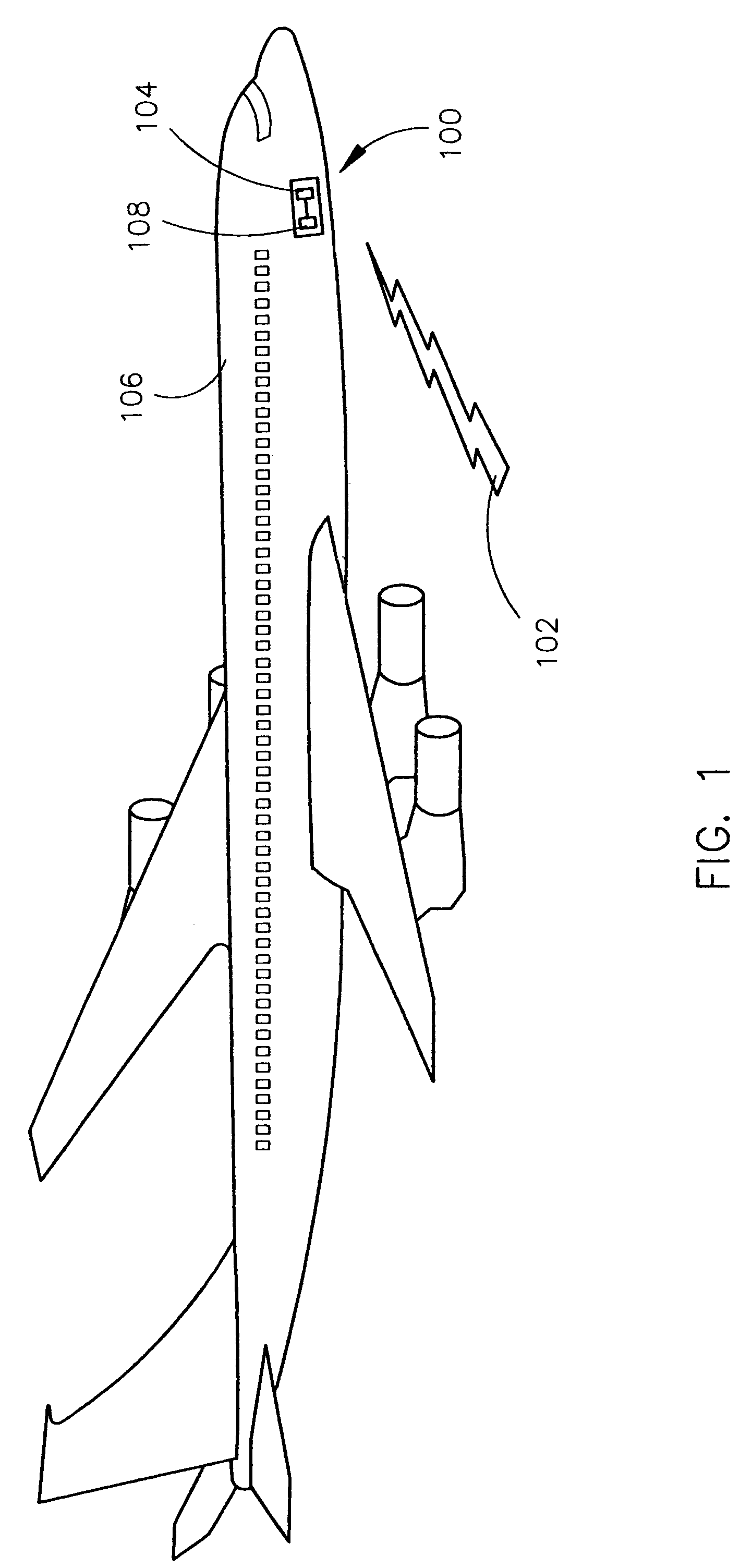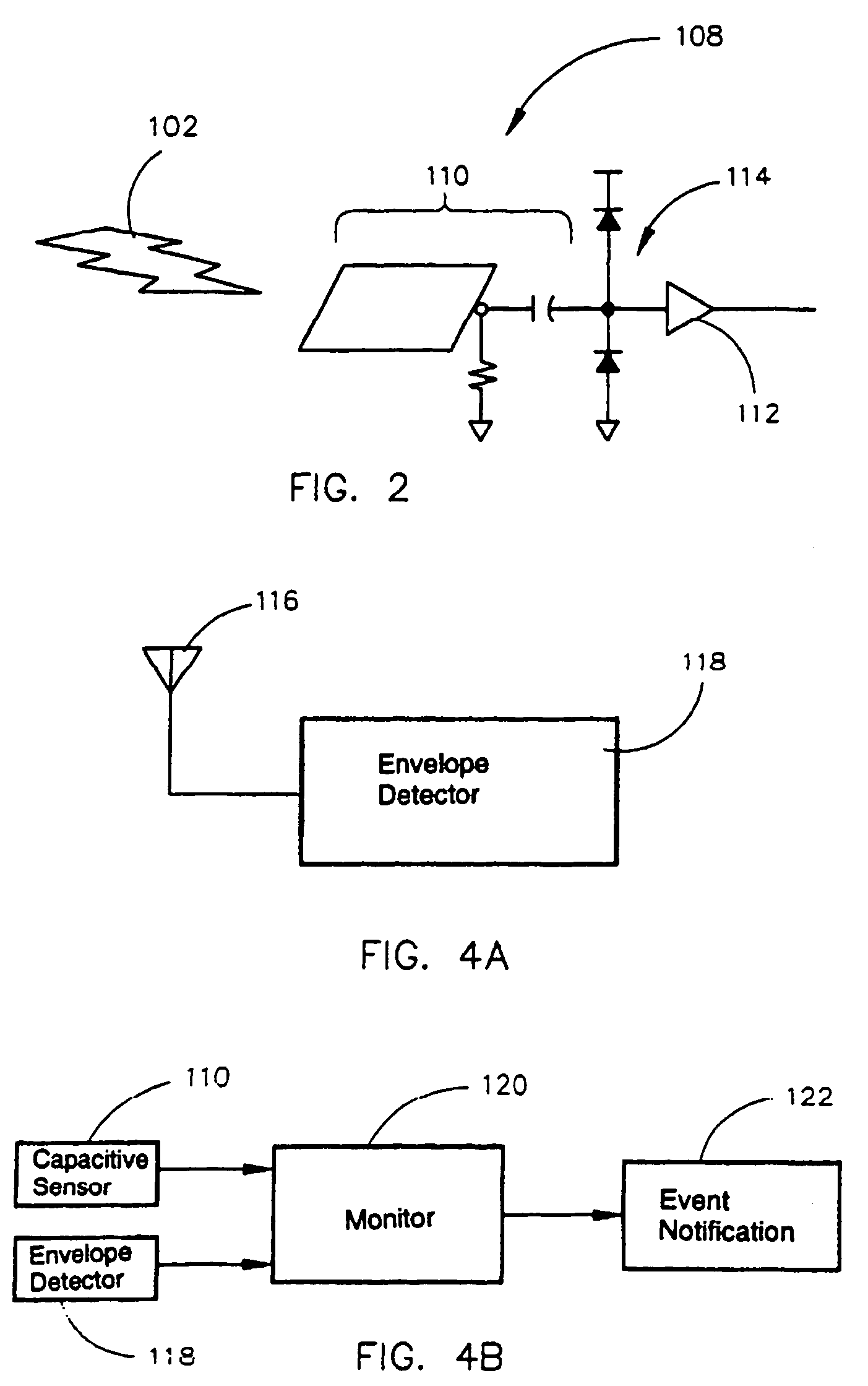Centralized HIRF detection system
a detection system and high intensity radiation technology, applied in the field of avionics, can solve the problems of contradicting identification, aircraft require continuous, uninterrupted access to the system,
- Summary
- Abstract
- Description
- Claims
- Application Information
AI Technical Summary
Benefits of technology
Problems solved by technology
Method used
Image
Examples
Embodiment Construction
[0017]Reference will now be made in detail to the presently preferred embodiments of the invention, examples of which are illustrated in the accompanying drawings. It is to be appreciated that corresponding reference numbers refer to generally corresponding structures.
[0018]Referring to FIG. 1, a system 100 for detecting HIRF or an external electromagnetic event 102 such as lightning, precipitation static, electromagnetic pulse, electrostatic discharge, and the like is provided. In an exemplary embodiment, the system 100 may include a communication system 104 for receiving and transmitting all communication operations for an aircraft 106. For example, the communication system 104 is a software defined radio communication system. Further, the system 100 may include a detector 108 which is communicatively coupled to the subsystem for detecting at least one of a HIRF or an external electromagnetic event and notifying the subsystem of the HIRF or external electromagnetic event. For inst...
PUM
 Login to View More
Login to View More Abstract
Description
Claims
Application Information
 Login to View More
Login to View More - R&D
- Intellectual Property
- Life Sciences
- Materials
- Tech Scout
- Unparalleled Data Quality
- Higher Quality Content
- 60% Fewer Hallucinations
Browse by: Latest US Patents, China's latest patents, Technical Efficacy Thesaurus, Application Domain, Technology Topic, Popular Technical Reports.
© 2025 PatSnap. All rights reserved.Legal|Privacy policy|Modern Slavery Act Transparency Statement|Sitemap|About US| Contact US: help@patsnap.com



